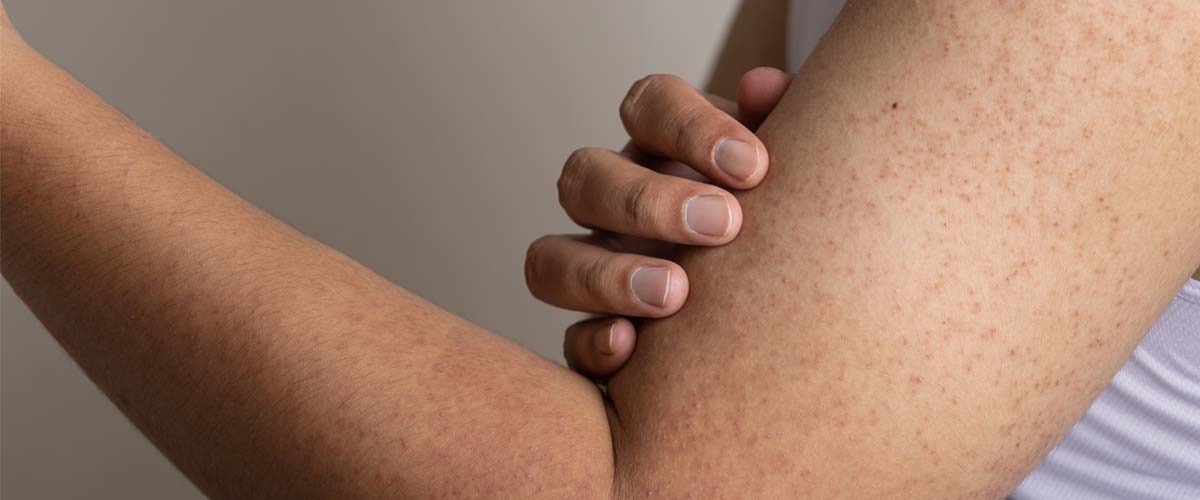If you have ever noticed small, rough, white or reddish bumps or patches that feel like sandpaper on the skin, you’re not alone.
Free shipping on orders over $49.99

Written by the Elucent skincare community

If you have ever noticed small, rough, white or reddish bumps or patches that feel like sandpaper on the skin, you’re not alone.
What is keratosis pilaris?
Keratosis pilaris, also known as follicular keratosis, develops when keratin blocks hair follicles, creating a rough appearance of the skin1. It is an extremely common skin condition. In fact, it’s estimated that keratosis pilaris affects more than half of all adolescents and about 40 per cent of the adult population2.
The bumps are most commonly found on the upper arms, thighs, cheeks and buttocks3. Unfortunately, there isn’t a cure for the condition1, and while keratosis pilaris doesn’t require treatment, some people would like to minimise the appearance of the small bumps and restore smoother skin.

How to treat keratosis pilaris?
Treating keratosis pilaris can be difficult, but incorporating two skincare steps into your daily regimen and applying proven active ingredients will have you on your way to softer skin.
Gentle exfoliation is a crucial step in any skincare regime, but even more so for people who have keratosis pilaris. It helps remove dead skin cells from the outer layer of your skin (the epidermis), which will reduce the appearance of the bumps (keratosis pilaris), stimulate cell turnover and improve the skin’s texture4.
You can use a loofah in conjunction with a keratolytic – a topical agent that is applied to the skin to soften the keratin. Keratolytic products containing Alpha hydroxy acids, or AHAs, are favoured by dermatologists5. AHAs are a group of natural acids used to help rejuvenate the skin. They can also be found in moisturisers, together with hydrating ingredients such as Vitamin E. Research has shown that AHAs can help with the exfoliation of epidermal skin cells to help improve dry, rough skin6.
One study found that the use of 10% lactic acid and 5% salicylic acid are effective in treating keratosis pilaris. Researchers discovered that patients using 10% lactic acid had their lesions reduced by an average of 66%, while other patients treated with 5% salicylic acid had a reduction of 52%7.
After gently exfoliating, it’s essential to moisturise the skin as dry skin can exacerbate keratosis pilaris.5 Moisturising two or three times a day is recommended, and it’s particularly important to lather on a rich moisturiser after a bath or shower while the skin is still damp, so the product is easily absorbed5.